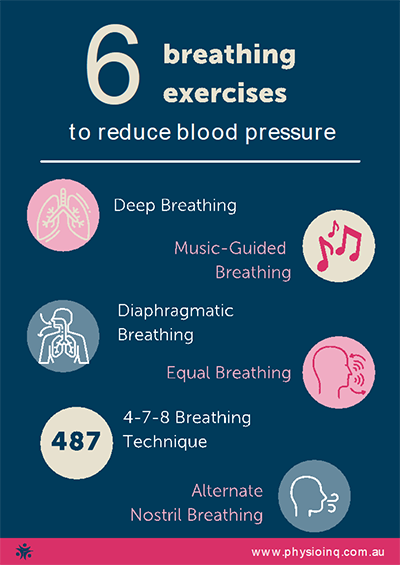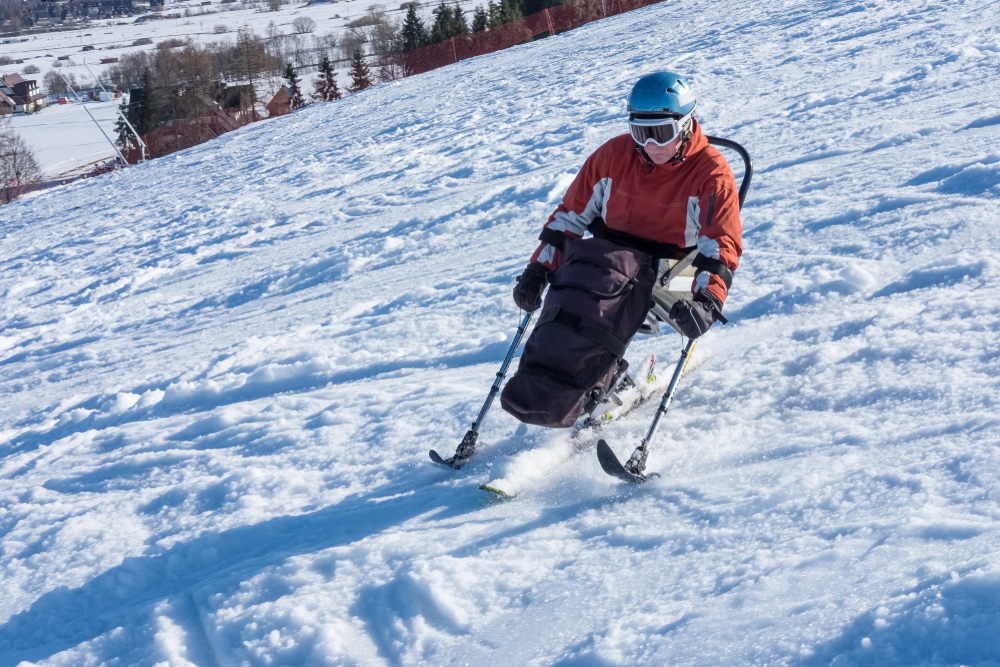Make an Appointment
Did you know... There are actually breathing exercises to lower blood pressure naturally.
It may sound pretty far-fetched and like it’s too good to be true. But in reality, breathing (particularly through your nose) and practising certain breathing exercises can really help if you struggle with high blood pressure.
Here, we’re going over the basics of blood pressure, why breathing is connected to reducing blood pressure and how to lower blood pressure with breathing exercises. So, let’s take a deep breath and get started!
What does it mean to have high blood pressure?
High blood pressure, also known as hypertension, is the measurement of how much blood is passed through your blood vessels and how much resistance your blood meets along the way.
Narrow arteries cause blood flow resistance and over time, this resistance can cause high blood pressure leading to other more serious issues like heart disease.
While the process of developing high blood pressure takes a while (often with hardly any systems that you’d be aware of), high blood pressure slowly causes damage to your blood vessels and organs -- particularly, your brain, heart, eyes and kidneys.
In other words, it’s a good idea to get your blood pressure under control.
What causes high blood pressure?
High blood pressure is caused by a variety of things, some less identifiable than others. Factors that may contribute to high blood pressure without much of a clear cause include:
- Genetics, meaning you may be predisposed to high blood pressure
- Physical changes like ageing
- Environmental factors, such as poor diet, lack of physical activity and high stress levels over time
Other more straightforward potential causes of high blood pressure include:
- Kidney disease
- Obstructive sleep apnea
- Congenital heart defects
- Thyroid problems
- Side effects of certain medications
- Illegal drug use
- Alcohol abuse
- Adrenal overactivity or fatigue
- Endocrine tumours
While blood pressure medication may be the right option for you, there are other ways to treat high blood pressure before it gets out of control. And it starts with something as simple as learning to breathe properly.
Can breathing lower blood pressure?
Yes, breathing exercises can lower blood pressure when you do it right. And while it might seem ridiculous that breathing -- something we do hundreds of times every day -- could help with issues related to high blood pressure, it actually makes sense when you think about it.
So, what exactly happens when you take a deep breath and why does it have anything to do with blood pressure at all?
Well, when you breathe deeply, you’re allowing your body to fully exchange oxygen for carbon dioxide. And although it may feel quite unnatural compared to the thoughtless breathing we do throughout the day, you’ll feel the benefits of deep breathing straight away.
In particular, breathing through the nose lowers blood pressure because you’re taking in more oxygen that way, supporting smooth blood flow and calming your nervous system.
Most people breath through their mouths more often than they realise and using breathing techniques to do more nostril breathing can be particularly beneficial, especially while we’re sleeping.
Our noses are built to act as a filter and to offer our bodies the best oxygen intake possible. And while we’re able to breathe through our mouths, to lower blood pressure and receive the other health benefits from breathing, doing so through your nose is always going to be your best bet.
5 Minute Breathing Techniques to Lower Blood Pressure
Can controlled breathing lower blood pressure?
Yes, simply controlling your breathing can lower blood pressure. However, keep in mind that this is only one piece of the puzzle.
If you’re dealing with high blood pressure due to a poor diet or lack of exercise, these other areas of health maintenance will also be required to seriously lower high blood pressure.
However, your blood pressure, again, can rise simply due to stress and, as basic as it sounds, taking a few deep breaths throughout the day and trying out some specific breathing exercises (as we’ll see below) can help in astonishing ways.
How to lower blood pressure with breathing exercises?
Generally speaking, there’s not only one single best breathing exercise for high blood pressure. There are many different methods you can try. Here are some to start with:
- Deep Breaths
- Equal Breathing
- Diaphragmatic Breathing
- 4-7-8 Breathing Technique
- Alternate Nostril Breathing
- Music-Guided Breathing
Let’s deep dive into each of these below.

Deep Breaths
The first exercise you can try to reduce high blood pressure is to simply take some deep breaths.
All you need is 30 seconds to close your eyes and focus on your breathing. It’s incredible how different you’ll feel if you simply choose to breathe deeply throughout the day.
- Sit or lie down comfortably in a quiet place. Close your eyes and relax your body as much as you can.
- Set a timer for 30 seconds.
- Take six slow deep breaths in through your nose and out through your nose or mouth, focusing on your inhalation and exhalation.
- Repeat as needed.
Deep Breathing Exercises | Guided Tutorial
Equal Breathing
Equal breathing simply means that the length of your inhalations and your exhalations will be equal.
This breathing technique takes you a step up from simply breathing deeply because, as you count out the length of your breaths, you’re focusing even more intently on your breath and nothing else.
- Sit or lie down comfortably in a quiet place. Close your eyes and relax your body as much as you can.
- Slowly inhale through your nose while counting to four.
- Pause briefly at the top of your inhale, allowing your lungs to reap the benefits.
- Slowly exhale through your nose or mouth while counting to four.
- Pause briefly at the bottom of your exhale as you empty your lungs completely.
- Repeat as needed.
With equal breathing, you can practise varying the lengths of your breath, seeing how much you can slow down your breathing. For example, breathing in for 8 and breathing out for 8, etc.
Equal Breathing Exercises Guide
Diaphragmatic Breathing
Diaphragmatic breathing is a particular type of breathing that works by expanding not only the lungs but the diaphragm too. It allows for more efficient breathing to bring more oxygen into the body which helps with blood flow and therefore, blood pressure.
- Lie flat on your back in a quiet place, using pillows to lift your head to support your neck and to place under bent knees.
- Gently place one hand on your chest and one hand just below your rib cage.
- Slowly inhale through your nose. The hand on your chest should remain still while the hand below your rib cage (on your diaphragm) should lift.
- Slowly exhale through your mouth with pursed lips, keeping the hand that’s on your chest still while the hand on your diaphragm gently lowers.
- Continue this exercise for at least 10 breaths or until you feel satisfied.
Introduction to Diaphragmatic Breathing
Date Published: Wednesday, October 6, 2021
Need to get into direct contact with ur Client Services team? We're all ears. Call our team directly on 1300 731 733



